Introduction
Specifications and Features
Announced at the tail-end of 2014, the Tamron SP 15-30mm f2.8 Di VC USD is not, as you might expect, intended for APS-C format models; instead, it’s an ultra-wide, full-frame, high-speed zoom targeting the 16-35mm f2.8 equivalent offerings from Canon, and Nikon.
That makes it rather niche, but it has a number of attractive features, including a silent sonic-type motor, optical stabilization (what Tamron calls Vibration Compensation or VC), anti-ghosting nano-type (eBAND) and hydrophobic fluorine coatings. It also has a circular 9-bladed aperture, rendering rounded highlights and smooth transitions to areas of differential focus.
Tamron also claims that the lens is moisture resistant, but besides a rubber-like seal on the mount, it’s not clear if the lens has sealing elsewhere. The optical construction consists of 16 elements in total arranged in 13 groups with a mix of aspherical surfaces and LD glass to reduce chromatic aberrations. With a built-in lens hood and no accessory thread, however, there is no provision to fit filters. The lens focuses to 11 inches (28cm) and measures 3.87 x 5.63” (98.4 x 145mm), and weighs a not-insignificant 2.42 lb (1.1kg). It is available in Canon and Nikon mounts (with Sony to follow) for around $1,199 (USD).
- 18 elements arranged in 13 groups
- F/2.8 constant aperture
- Sonic-type motor
- Aspheric surfaces
- LD (ED type) glass
- 9x circular aperture blades
- 11-inch (28cm) minimum focus
Measurements: High score and high peak sharpness
With a DxO Mark lens score of 31 points and a peak sharpness of 24P-Mpix, the Tamron is an exceptional performer. It has very high center sharpness at all focal lengths, even wide-open at f/2.8. Sharpness is highest at its widest setting; however, sharpness is at its most homogenous across the image field at 20-24mm, and like some other models in this range, it has some slight field curvature at 50mm.
Barrel distortion is inevitable at 16mm and while relatively high, it is well-controlled and just avoids the difficult-to-correct complex (mustache-type) distortion. At the same time, chromatic aberration is low at 16mm, though it can appear across the outer two-thirds of the image field. The degree of vignetting is consistent with others, but the transmission at T3.3 is a little low and somewhat disappointing.
Tamron SP 15-30mm f2.8 Di VC USD (A012) vs Tokina AT-X 16-28 F2.8 PR FX: Good central sharpness
While there isn’t really a predecessor to compare it with, rival maker Tokina offers a model with a similar range and maximum aperture. At around $849, it’s attractively priced, and on the D810 it performs well, but it’s not quite up to the newer Tamron, particularly in terms of sharpness and uniformity at the initial aperture.
It has a good sharpness in a small central core that expands towards the longer focal lengths, but edge and corner sharpness are disappointing compared with the Tamron, not matching it until at least f/5.6. The Tokina, however, is no slouch. It has superior transmission and better control of distortion; however, while vignetting maxes out at -1.3 Ev, just -0.1 Ev for the worse in our metrics, it is in fact much more noticeable.
Tamron SP 15-30mm F/2.8 Di VC USD (A012) vs Nikon AF-S Nikkor 16-35mm f/4G ED VR vs Nikon AF-S Nikkor 14-24mm f/2.8G: Competitive optical performance
Against the one-stop slower yet stabilized Nikkor 16-35mm f/4, the Tamron is the slightly better performer. It has higher sharpness at f/4 than the Nikkor over the wider focal lengths, while more or less matching it at its longest, and of course the Tamron isn’t bad at f/2.8, either.
The 16-35mm f4 Nikkor holds its own with regards to distortion, but it has more chromatic aberration at 16mm, along with more noticeable vignetting. The Tamron also does well against Nikon’s highly-regarded 14-24mm F/2.8. The Nikkor is wider, of course, and even 1mm at this focal length makes quite a difference in field of view and in complexity of construction. Even so, the 14-24mm Nikkor is sharper and has better uniformity at 14mm from the initial aperture than the Tamron, although the reverse is true at 24mm. In fairness, though, it is the performance at 14mm that accounts for the $2,000 price tag. The Nikkor is 0.3 of a stop faster, however, and has better control of distortion at wider focal lengths, and similar vignetting. Chromatic aberration isn’t held in check quite as well at the wider end as the Tamron, but it is better controlled than the 16-35mm f/4.
Conclusion
All lenses are a compromise, but the Tamron has a good balance, with high central sharpness wide-open and sharpness improving across the frame on stopping down, and with generally good control of chromatic aberration. On the downside, it has some slight field curvature at 30mm and it has quite high levels of both barrel and pincushion distortion that are more noticeable than the Nikkor equivalents.
However, at least the Tamron doesn’t exhibit complex distortion, so it should be relatively easy to correct with software. In physical terms, the lens is large and heavy and doesn’t cover the popular 35mm focal length, but as a 24-47mm equivalent on an APS-C-format DSLR, it remains a versatile offering. Combined with its good performance and the lure of built-in stabilization, at around $1,200 it looks very tempting.


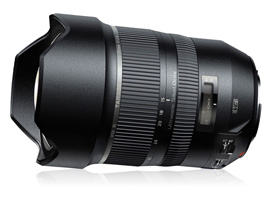


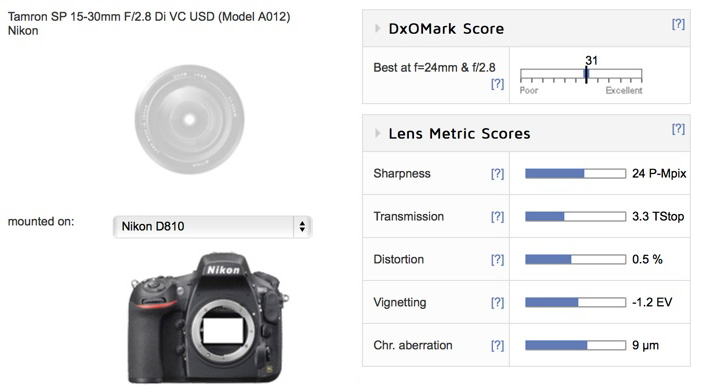
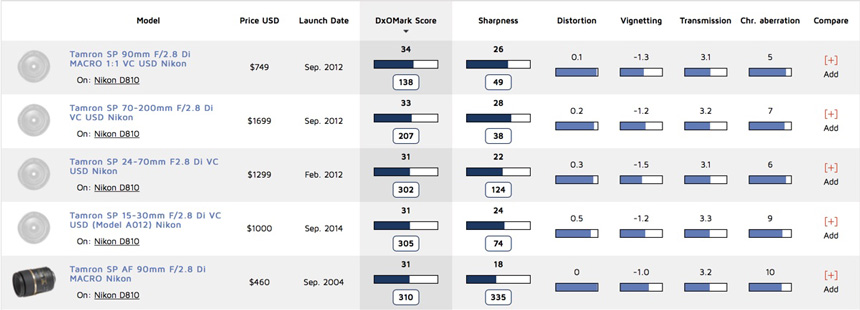
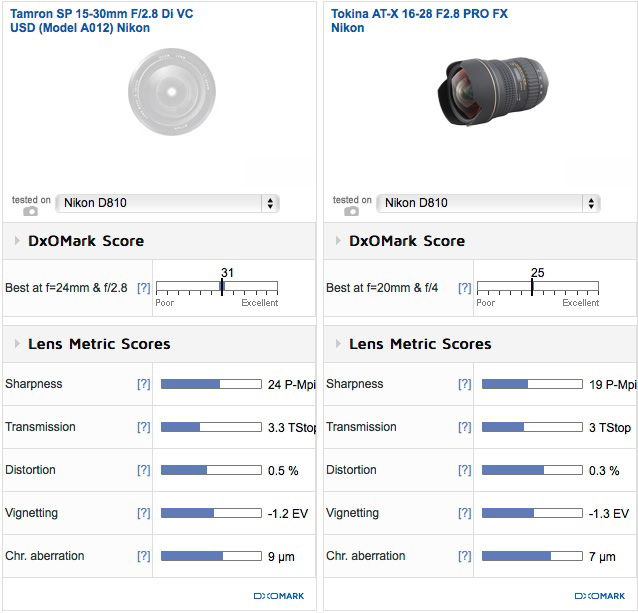
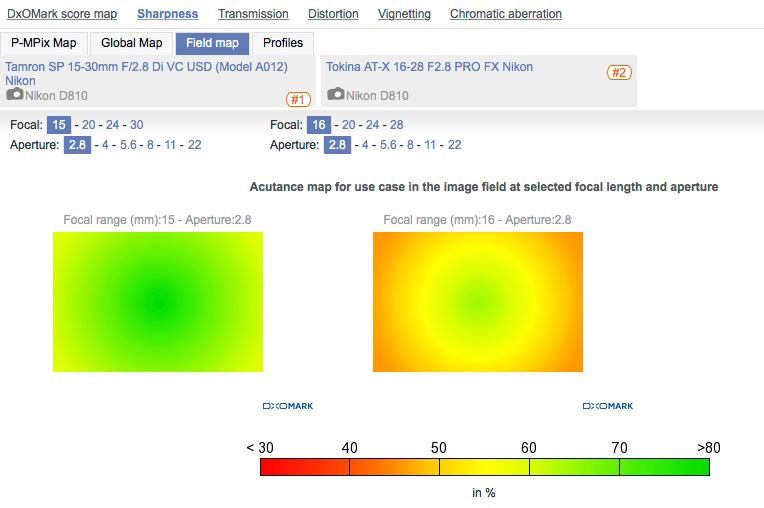
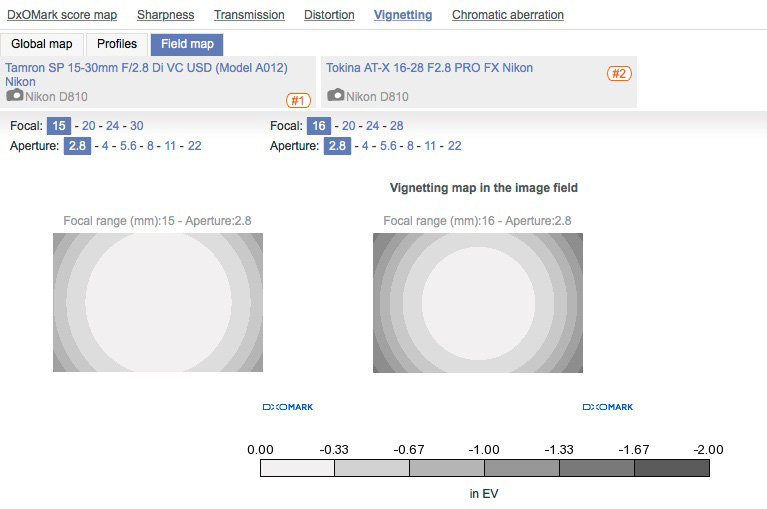
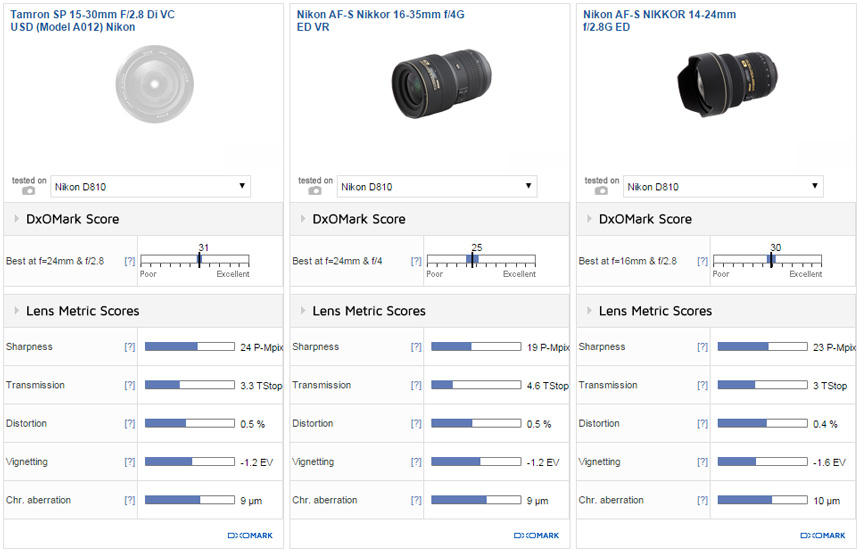
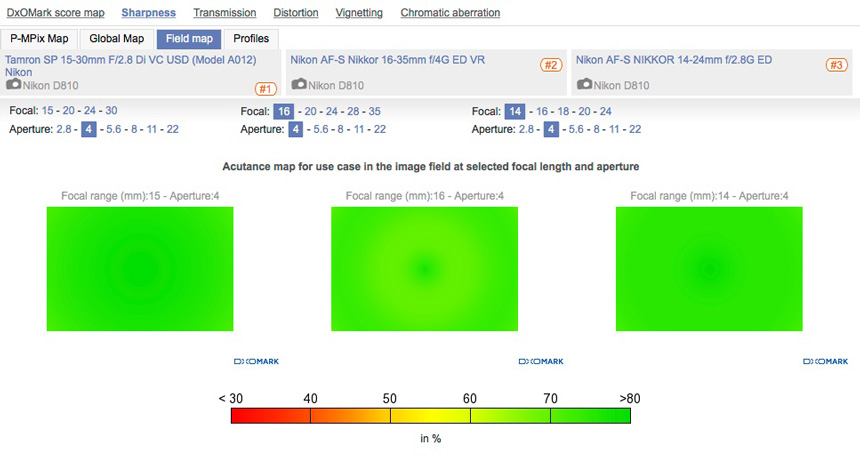
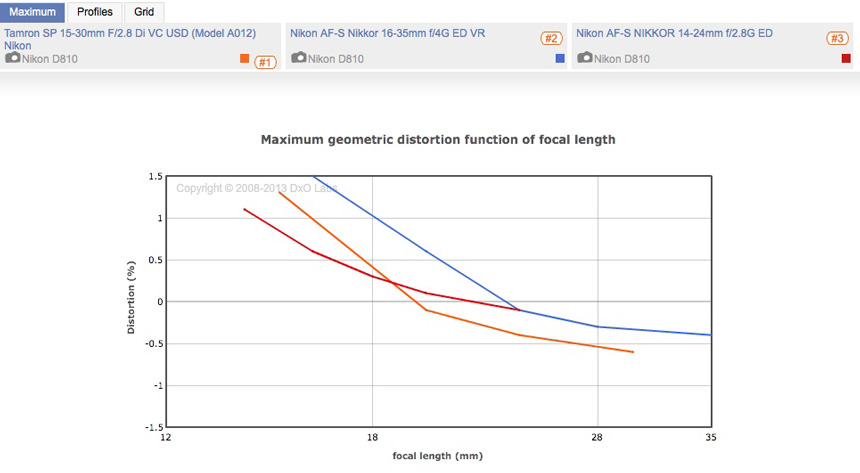
DXOMARK encourages its readers to share comments on the articles. To read or post comments, Disqus cookies are required. Change your Cookies Preferences and read more about our Comment Policy.